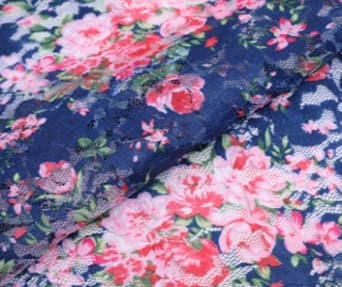Creating stretchy lace involves a combination of materials and weaving techniques to achieve both the delicate aesthetics of lace and the desired elasticity for comfortable wear. Stretchy lace is a versatile fabric widely used in lingerie, activewear, and other form-fitting garments.The process of making stretchy lace begins with selecting suitable materials. Nylon and spandex are commonly used fibers to achieve the desired stretchiness. Nylon provides the intricate lace pattern, while spandex imparts the necessary elasticity.

The weaving process involves specialized machines that interlace the nylon and spandex fibers. Traditional lace-making techniques are adapted to incorporate the spandex, resulting in a delicate yet flexible fabric. The intricate patterns are meticulously woven, maintaining the aesthetic appeal that lace is known for.
The inclusion of spandex introduces stretchiness to the lace. The spandex fibers are woven in a way that allows the fabric to stretch and then return to its original shape. This elasticity is crucial for ensuring a comfortable fit, especially in garments that require movement and flexibility.
After weaving, the stretchy Lace fabric is often treated to enhance its properties. This can involve processes like heat setting, where the fabric is exposed to controlled heat to stabilize its stretch and prevent excessive shrinkage. Additionally, the fabric may undergo finishing treatments to improve its texture, drape, and overall feel.
The resulting Stretchy Lace Fabric can be used in various applications, from bralettes and panties to leggings and body-hugging dresses. Its combination of alluring aesthetics and comfortable stretch make it a popular choice for designers aiming to create stylish yet wearable pieces.
In summary, making stretchy lace involves a careful balance of materials, weaving techniques, and post-processing treatments. The incorporation of spandex alongside nylon ensures that the fabric retains its intricate lace patterns while offering the desired elasticity for comfortable and form-fitting garments. The process highlights the fusion of traditional craftsmanship with modern functionality, resulting in a fabric that appeals to both aesthetics and practicality.